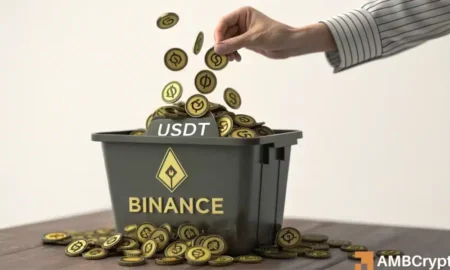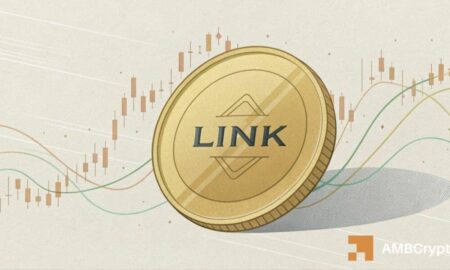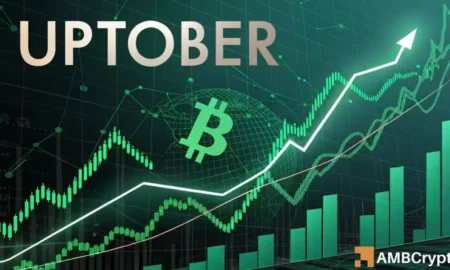Aster Token’s Recent Price Movement: Understanding the Drop and Potential Recovery
Aster (ASTER) has recently experienced significant volatility, making headlines with a sharp price drop that stirred concerns among investors. After hitting a high of $1.05, the token plummeted 19% to a two-month low of $0.85 before partially recovering to approximately $0.93. Currently trading at $0.92, Aster’s performance reflects a 7.92% decline on daily charts and an 18% drop over the past week. This article delves into the reasons behind Aster’s sharp descent and signals indicating a possible rebound towards the $1 mark.
The Trigger Behind the Price Drop: Rumors of a Massive Sell-off
The recent downturn in Aster’s price can be attributed largely to explosive rumors regarding China’s richest crypto entrepreneur, Binance Founder Changpeng Zhao (CZ), purportedly liquidating a substantial portion of his holdings. Reports suggested that a wallet associated with CZ sold 35 million ASTER tokens for a staggering $30.42 million. As panic spread throughout the crypto community, investors and holders rushed to sell their tokens, causing a drastic decline in price. Nevertheless, this narrative was complicated when reliable monitoring platforms like Lookonchain disputed the sell-off claims, indicating that the large transfer was between Binance’s hot wallets and not directly involving CZ’s assets.
Aggressive Selling Driven by Panic
Following the rumors surrounding CZ’s sell-off, Aster faced a surge in panic selling, further aggravating the decline. According to Coinalyze, Aster recorded a staggering $107 million in sell volume versus $103 million in buy volume in the 24 hours leading up to the report. This discrepancy created a negative Buy-Sell Delta of -$4 million, suggesting that aggressive selling was overwhelming buyer interest. Additionally, Aster’s top addresses increased their activities, offloading approximately 35.6 million tokens. Historically, such increased selling pressure typically leads to sustained downward trends, resulting in lower prices for the token.
Futures Market Responses: Liquidations Increase
The sharp decline in Aster’s value also had repercussions in the Futures market. Investors either voluntarily closed their positions or were forced into liquidation as prices fell. Recent data from CoinGlass indicated that Futures liquidation had soared to a two-week high of $8.5 million, with $8.2 million in long positions being liquidated. Furthermore, Futures outflows increased to $552 million, a notable rise from $509 million in inflows, resulting in a net flow decline of -$42 million. This clear indicator of increasing selling activity adds to the overwhelming bearish sentiment circulating around Aster.
Indicators of Seller Dominance
Market indicators present a concerning outlook for Aster, as the coin’s Stochastic RSI fell sharply from 26 to 12, showcasing heightened seller dominance. Similarly, the Relative Vigor Index revealed a bearish crossover, dropping to -0.138, which indicates strengthened downward momentum. These technical indicators suggest that unless buyers come to reclaim control, Aster may find temporary support around the $0.90 mark. If the selling trend continues unchecked, this could exacerbate the token’s struggles.
Signs of Potential Recovery
Despite the dire situation, there are emerging signals indicating that Aster may have the potential for recovery. The claims regarding CZ’s sell-off have been challenged, leading to increased buyer interest. If this sentiment continues, it may absorb the selling pressure that’s currently dominant in the market. For Aster to initiate a recovery, the bullish sentiment needs to outweigh bearish momentum, enabling the token to regain its footing and push towards the $1 resistance level.
Conclusion: A Cautious Outlook
In conclusion, Aster’s recent price drop has been largely fueled by rumors of a massive sell-off linked to Binance founder CZ. While the initial panic resulted in aggressive selling and heightened futures liquidations, contradicting evidence has provided a glimmer of hope for recovery. If the demand from buyers increases and the selling pressure subsides, Aster could indeed aim for a rebound towards the $1 mark. However, investors should remain vigilant and monitor market indicators closely, as sustained recovery depends on a balance between buyer interest and seller dominance.
















